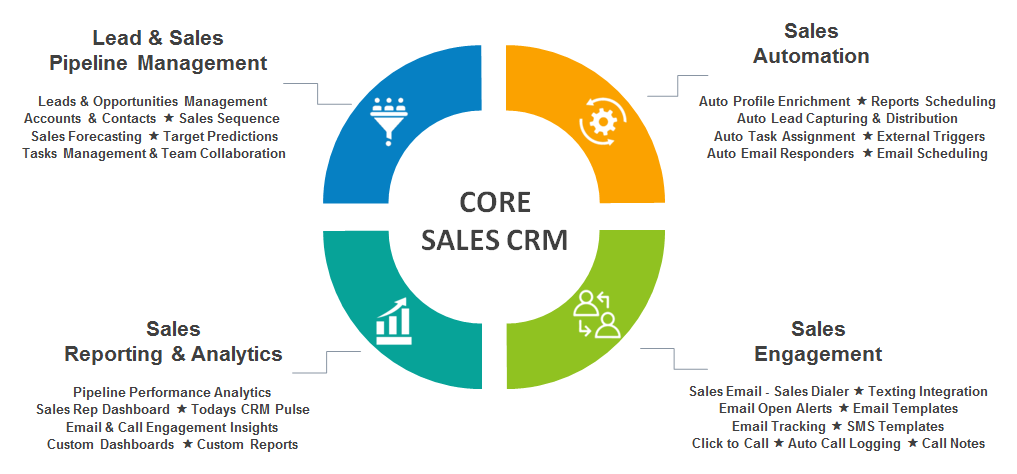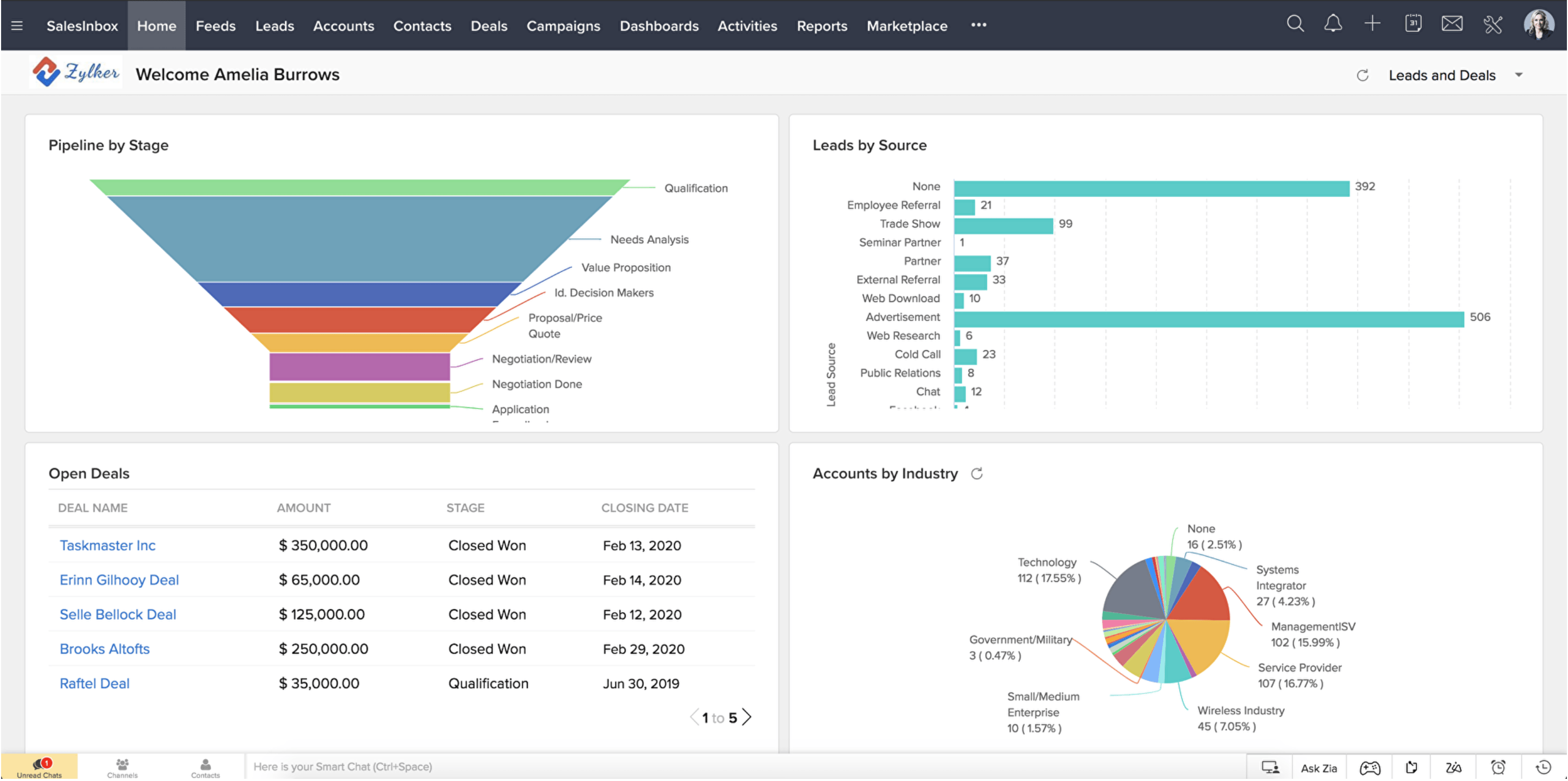Embark on a journey into the realm of CRM selling, where technology empowers sales teams to streamline processes, nurture customer relationships, and achieve remarkable results. Discover the fundamentals, strategies, tools, and metrics that will transform your sales operations and propel your business to new heights.
CRM (Customer Relationship Management) has revolutionized the sales landscape, providing businesses with a centralized platform to manage every aspect of the sales cycle. By leveraging CRM, sales professionals can gain a deeper understanding of their customers, automate tasks, and make informed decisions that drive revenue growth.
CRM Selling Fundamentals

Customer Relationship Management (CRM) selling is a sales strategy that focuses on building and maintaining long-term relationships with customers. It involves using a CRM system to track and manage customer interactions, preferences, and sales opportunities. By leveraging CRM data, sales professionals can personalize their interactions, tailor their sales pitches, and improve the overall customer experience.
Benefits of Using CRM for Selling
- Improved Customer Relationship:CRM helps sales teams build stronger relationships with customers by providing a comprehensive view of their interactions and preferences. This enables sales professionals to understand customer needs better, respond to their queries promptly, and offer personalized solutions.
- Increased Sales Productivity:CRM streamlines the sales process by automating tasks such as lead generation, lead qualification, and opportunity management. This allows sales teams to focus on high-value activities, such as building relationships and closing deals, resulting in increased productivity.
- Enhanced Sales Forecasting:CRM provides valuable insights into sales pipelines and customer behavior, enabling sales teams to make accurate forecasts and plan their sales strategies accordingly. By analyzing historical data and identifying trends, sales professionals can better predict future sales performance and adjust their strategies to maximize results.
- Improved Customer Segmentation:CRM allows sales teams to segment customers based on various criteria such as demographics, industry, or purchase history. This segmentation enables sales professionals to tailor their sales pitches and marketing campaigns to specific customer groups, increasing the effectiveness of their sales efforts.
- Better Collaboration:CRM fosters collaboration between sales teams and other departments, such as marketing and customer service. By sharing customer information and insights, teams can align their efforts and provide a seamless customer experience throughout the sales journey.
CRM Selling Strategies
CRM (Customer Relationship Management) is a powerful tool that can help sales teams manage their pipelines, qualify leads, and track customer interactions. By leveraging CRM effectively, sales professionals can streamline their processes, improve their efficiency, and close more deals.
Best Practices for Using CRM to Manage Sales Pipelines
- Create a clear and concise sales process that defines each stage of the pipeline.
- Use CRM to track the progress of each opportunity through the pipeline.
- Set up automated reminders and notifications to keep the sales team on track.
li>Use CRM to generate reports that track key sales metrics, such as conversion rates and average sales cycle length.
Techniques for Using CRM to Qualify Leads
Qualifying leads is essential for ensuring that sales teams are focusing their efforts on the most promising opportunities. CRM can help with this process by providing a central repository for lead information, such as contact details, company information, and previous interactions.
- Use CRM to create lead scoring criteria that help to identify the most qualified leads.
- Use CRM to track the progress of each lead through the qualification process.
- Use CRM to generate reports that track key lead qualification metrics, such as lead-to-customer conversion rates and average lead response time.
How to Use CRM to Track Customer Interactions
Tracking customer interactions is essential for building strong relationships and providing excellent customer service. CRM can help with this process by providing a central repository for all customer interactions, such as phone calls, emails, and meetings.
- Use CRM to create a customer relationship timeline that tracks all interactions with each customer.
- Use CRM to track customer preferences and buying history.
- Use CRM to generate reports that track key customer interaction metrics, such as average response time and customer satisfaction scores.
CRM Selling Tools

CRM software solutions are essential for businesses to manage their customer relationships effectively. They provide a centralized platform for storing and managing customer data, tracking interactions, and automating tasks. Different CRM systems offer varying features and capabilities, making it important to choose the right one for your business needs.
CRM Software Solutions, Crm selling
- Salesforce:A leading CRM platform with a wide range of features, including sales automation, customer service, and marketing automation.
- Microsoft Dynamics 365:A comprehensive CRM solution that integrates with other Microsoft products, such as Office 365 and Power BI.
- HubSpot CRM:A free and easy-to-use CRM that is ideal for small businesses and startups.
- Zoho CRM:A cloud-based CRM that offers a wide range of features at an affordable price.
- Pipedrive:A sales-focused CRM that is designed to help businesses close deals faster.
Choosing the Right CRM
When choosing a CRM system, it is important to consider the following factors:
- Business needs:Identify the specific features and capabilities that are important for your business.
- Scalability:Ensure that the CRM system can grow with your business as it expands.
- Integration:Consider how the CRM system will integrate with other software applications that you use.
- Cost:Determine the cost of the CRM system and whether it fits within your budget.
- Support:Make sure that the CRM vendor provides adequate support and training.
CRM Selling Integration

Integrating CRM with other business systems is crucial for streamlining processes and enhancing efficiency. By connecting CRM with systems like ERP, marketing automation, and customer service platforms, businesses can gain a comprehensive view of customer interactions and data.
Benefits of Integrating CRM with Marketing Automation
Integrating CRM with marketing automation offers numerous advantages, including:
- Automated lead generation and nurturing
- Personalized marketing campaigns based on customer behavior
- Improved campaign performance tracking and optimization
- Enhanced collaboration between sales and marketing teams
Case Studies of Successful CRM Integrations
Several companies have successfully implemented CRM integrations to improve their business outcomes. For instance, Salesforce’s integration with Google Analytics 360 enabled a major retailer to gain insights into customer behavior and optimize its marketing campaigns, resulting in a 15% increase in conversion rates.
CRM Selling Measurement
Measuring the success of CRM selling initiatives is crucial for evaluating their effectiveness and optimizing performance. This involves tracking relevant metrics, assessing ROI, and implementing best practices to ensure optimal utilization.
Metrics for Measuring Success
Key metrics for measuring the success of CRM selling initiatives include:
- Sales revenue generated
- Number of new customers acquired
- Customer lifetime value (CLTV)
- Sales cycle length
- Customer satisfaction scores
Tracking ROI from CRM Investments
To track the ROI from CRM investments, consider the following:
- Calculate the total cost of ownership (TCO) of the CRM system, including software, hardware, implementation, and maintenance costs.
- Measure the incremental revenue generated by the CRM system over a specific period.
- Subtract the TCO from the incremental revenue to calculate the net ROI.
Best Practices for Optimizing CRM Performance
Best practices for optimizing CRM performance include:
- Regularly review and update CRM data to ensure accuracy and completeness.
- Train sales teams on how to effectively use the CRM system.
- Integrate the CRM system with other business systems, such as marketing automation and customer support.
- Monitor CRM usage and make adjustments as needed to improve efficiency and effectiveness.
Outcome Summary: Crm Selling

In conclusion, CRM selling has emerged as an indispensable tool for businesses seeking to optimize their sales performance. By embracing the principles Artikeld in this guide, you can empower your sales team to build stronger customer relationships, increase productivity, and achieve unprecedented success.
Questions Often Asked
What are the key benefits of using CRM for selling?
CRM offers numerous benefits, including improved customer management, streamlined sales processes, enhanced communication, and increased sales efficiency.
How can CRM help me qualify leads more effectively?
CRM provides tools for lead scoring, segmentation, and tracking interactions, enabling sales teams to identify and prioritize the most promising leads.
What are some best practices for integrating CRM with other business systems?
To ensure seamless integration, it’s crucial to define clear goals, choose the right integration tools, and involve all relevant stakeholders in the process.
